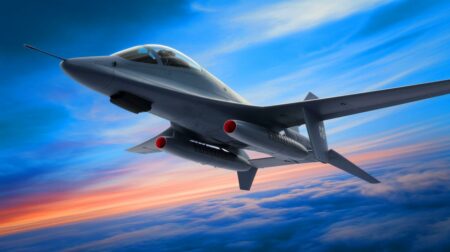| IN A NUTSHELL |
|
The world of aviation is filled with intriguing dynamics, particularly when it comes to the altitudes at which different aircraft operate. While commercial airliners have their well-defined cruising altitudes, private jets soar even higher. This distinction is not just a matter of preference but a strategic choice influenced by several factors like fuel efficiency, comfort, and safety. Understanding why private jets opt to fly at such impressive heights provides insight into their design and operational advantages. Let’s dive into the reasons that elevate private jets above their commercial counterparts.
Altitudes of Cruise: Performance and Optimization
Commercial airplanes generally cruise between 33,000 and 39,000 feet, with an average of around 35,000 feet. These altitudes are chosen to optimize fuel consumption and to fly in favorable weather conditions. In contrast, private jets, which are often lighter and possess a superior weight-to-power ratio, ascend to greater heights, ranging between 39,000 and 51,000 feet. Light jets typically cruise between 30,000 and 41,000 feet, while midsize jets can reach about 45,000 feet. The largest models can climb up to 50,000 feet.
Flying at higher altitudes offers a multitude of benefits. For instance, the air is less dense, which reduces drag and decreases fuel consumption. Conversely, at lower altitudes, thicker air results in greater resistance, leading to higher fuel expenditure. This advantage is crucial for private jets, which aim to maximize efficiency and minimize travel time, offering a unique blend of speed and economy.
Aircraft Design: Standing Out in the Sky
Commercial planes resemble flying buses, engineered to transport large numbers of passengers and cargo over long distances. Their operational ceiling is between 41,000 and 43,000 feet, allowing them to follow established air routes. On the other hand, private jets are likened to fast cars of the sky; they carry fewer passengers but benefit from quick ascents thanks to their lightweight construction.
This design not only allows private jets to reach their optimal cruising altitude swiftly but also enables them to effectively avoid adverse weather conditions by flying above the usual paths of commercial aircraft. The unique construction of private jets gives them the agility and flexibility necessary to navigate the skies with precision, offering a distinct advantage in both comfort and speed.
Air Traffic and Weather: Strategic Advantage
Air routes are often meticulously planned to keep traffic under control, especially for commercial aircraft that operate in heavily congested airspace. Private jets, however, have the luxury of taking more direct and faster routes, as they fly above the primary airways. This capability not only saves time but also enhances safety by keeping them away from potential mid-air congestion.
Moreover, most dangerous weather phenomena occur below 33,000 feet, making travel aboard private jets smoother and more comfortable as they soar above these unstable zones. The ability to navigate around or above challenging weather conditions ensures a safer and more pleasant journey, minimizing disruptions and enhancing the overall travel experience.
Speed and Comfort: The Added Benefits of Private Jets
At higher altitudes, less dense air helps aircraft conserve fuel while benefiting from increased speed. Private jets fully exploit this scenario with their remarkable agility, providing rapid and quiet flights. The reduced cabin noise ensures that the journey remains enjoyable, offering passengers a serene environment to relax or work.
The combination of speed, comfort, and efficiency makes private jets a preferred choice for those who prioritize time and luxury. With the ability to bypass the crowded airways and typical delays that commercial flights encounter, private jets offer an unparalleled travel experience that is both swift and tranquil.
In summary, the decision for private jets to fly at higher altitudes is grounded in the pursuit of efficiency, safety, and comfort. By leveraging their design and operational capabilities, private jets provide a unique travel experience that stands out in the aviation industry. As technology continues to evolve, one might wonder how these advancements will further enhance the allure and performance of private jets in the skies. Could future innovations push the boundaries of altitude even higher?
Did you like it? 4.5/5 (26)









Wow, I never knew private jets could fly so high! 🚀